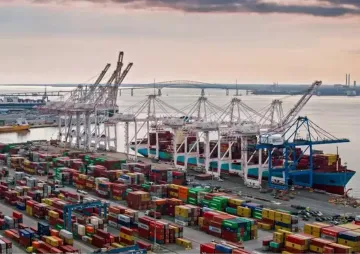
Science and technology has had a significant impact in how we lead our lives today. Technological innovations and access to information have changed the way human beings interact with each other. It is now common to look up things we need to know on the Internet, in the same way as a few who had access to libraries in the past, to make our interactions with professionals, such as doctors, lawyers, etc., more sharp and relevant. Internet penetration is increasing at a more rapid pace, especially since the introduction of smartphones.
The number of WhatsApp users exceeds one billion, while a similar interactive service by Skype languishes at 75 million users (the latter registered by email address rather than cell phone number). They confirm an inexorable mobile trend. India has over 400,000 cell phone towers and providing satellite connectivity to them allows universal coverage.
| Year |
Internet Users ** |
Penetration (Percentage of Population) |
Total Population |
Non-Users (Internetless) |
1Y User Change |
1YUser Change |
Population Change |
| 2016* |
462,124,989 |
34.8 % |
1,326,801,576 |
864,676,587 |
30.5 % |
108,010,242 |
1.2 % |
| 2015* |
354,114,747 |
27 % |
1,311,050,527 |
956,935,780 |
51.9 % |
120,962,270 |
1.22 % |
| 2014 |
233,152,478 |
18 % |
1,295,291,543 |
1,062,139,065 |
20.7 % |
39,948,148 |
1.23 % |
| 2013 |
193,204,330 |
15.1 % |
1,279,498,874 |
1,086,294,544 |
21.5 % |
34,243,984 |
1.26 % |
| 2012 |
158,960,346 |
12.6 % |
1,263,589,639 |
1,104,629,293 |
26.5 % |
33,342,533 |
1.29 % |
| 2011 |
125,617,813 |
10.1 % |
1,247,446,011 |
1,121,828,198 |
36.1 % |
33,293,976 |
1.34 % |
* estimate for July 1, 2016
** Internet user = Individual who can access the Internet at home, via any device type and connection
In recent years, geostationary (GEO) satellites have emerged as an alternate option for providing Internet access. A geostationary satellite is located 36,000 km above the Earth's equator and has a wider field of view — one satellite can look at one-third of the Earth's surface. This allows an Internet service provider (ISP) to acquire customers across a vast geographical area, albeit at a low throughput. Spotbeam services through GEO High Throughput Satellite (HTS) provide higher data rates. Both the ISP and the customers are wirelessly connected to the satellite via the individual antenna dishes. However, the power and regulatory limitations of mobile phones prevents them from accessing them.
There is a strong imperative to enable Internet connectivity, especially in rural areas. In addition, India, which has the fastest growing economy with a young workforce, is struggling to bridge the 'digital divide.' By June 2016, 462 million (39% of the total population) have been connected to the Internet. But the demographic dividend that India keeps boasting of, especially at a time when our neighbours are caught in an ageing society, will turn into a demographic disaster if India does not make some critical decisions.
It has also been estimated that India could add an extra $1 trillion to its Gross Domestic Product by 2020 if India were to achieve 100 percent Internet connectivity.
Extending Internet access to all especially in the rural areas is therefore fast becoming a goal for governments, including that of India. The economic imperative may be particularly compelling. About 45,000 Indian villages have universal mobile connectivity, while 120,000 villages will be connected via the Rural Internet Mission, the primary means being extending fibre-optic connectivity. However, over 100,000 villages will remain unconnected, resulting in a socially and politically untenable digital divide. Low-cost smartphones are most citizens' access devices of choice. Given the penetration of smartphones in rural areas of India, Internet connectivity could be provided using the already existing cell phone tower infrastructure. This approach could be realised via a constellation of high throughput LEO satellites beaming Internet to remote cell phone towers.
LEO Satellite-based Internet
The US Federal Communications Commission issued first call for Ka band satellite Internet applications in 1995. Amongst the applicants was Teledesic, a company that planned to operate 840 low earth orbit satellites (LEO) for providing Internet. The business idea eventually failed in 2003. The first satellite to provide Internet service is Eutelsat's e-BIRD (currently Eutelsat 31A) across Europe from the geostationary orbit. HughesNet, Exede (of ViaSat), dishNET are some of the American private companies providing satellite Internet across the US using geostationary satellites. Apart from terrestrial customers, ViaSat is also delivering high speed Internet to airline passengers in flight, maritime vessels as well as offshore oil and gas exploration stations.
According to the International Telecommunications Union, the number of subscribers opting for satellite based Internet is expected to rise from 1.5 million in 2011 to about six million in 2020. North America and Western Europe are assessed to dominate this growth trend. Alongside the growth in subscriber numbers, the satellite ISPs are also jostling to improve the efficiency of the use of allotted spectrum to meet the growing demand for higher data rate.
The high throughput satellites (HTS) are designed to provide services at least twice and up to 20 times the capacity of a normal satellite. Viasat-1 and EchoStar XVII provide more than 100 Gbit/second of capacity which is almost 100 times the throughput capacity of a normal Ku band satellite. This has been made possible by spot beam technology where the satellite beam is narrowed to focus on specific geographical areas consisting of the satellite ISP's subscribers. The HTS also makes use of frequency reuse technique for optimum utilisation of the allowed spectrum. The HTS are also cost effective with ViaSat-1 supplying a gigabit of data per second in space for less than $3 million as against the normal satellites costing over $100 million. By 2020, the HTS will generate at least 1.34 tera bytes per second of capacity.
But 'latency' continues to be a problem for this market. Latency is the amount of time a packet of data takes to travel from the subscriber to the server via the satellite and return. The latency is approximately 500 milliseconds in case of geostationary satellites. Although this is not a problem for several services on the Internet, subscribers face time delay and hence inconvenience during live streaming and interactive gaming sessions. In addition, the geostationary arc is getting congested to place new satellites. Unintentional signal interference remains a key problem for providing Internet services from this altitude due to broadcasting from terrestrial stations and satellites in other orbits. Meanwhile, the number of unconnected people rose from three billion to over four billion. The result is reigniting of interest in flying constellations of satellites in LEO that will provide continuous, low latency (~ 50 milliseconds) Internet service to every corner of the Earth. These LEO satellites can be accessed via cell phone towers that need very small amounts of power to communicate with.
OneWeb along with Airbus intends to orbit 648 satellites starting in 2018 at a cost of $3 billion, with interest to provide in-flight Internet service. This constellation is expected to provide a high throughput of 8 Gbps with latency under 30 milliseconds. SpaceX announced its plan to orbit about 4,000 LEO satellites over the next five years starting in 2017, for the same purpose. Google decided to partner with SpaceX and has finalised $1 billion investment. Meanwhile, OneWeb attracted interest from Virgin Group and Qualcomm. However, in terms of the capacity to undertake such a large mission, the SpaceX is somewhat better placed because it is in a position to launch these satellites on its own whereas OneWeb has to rely on Russia’s Soyuz as also Virgin Galactic’s LaunchOne rocket.
Indian scenario
Connectivity costs via geostationary (GSO) high-throughput satellites (HTS) are high as the high-power amplifier (HPA), antenna, electronics and back-up power could exceed $10,000 per cell tower. We therefore examine a future low-earth orbit (LEO) satellite constellations to lower costs. Table 1 compares LEO constellations and GSO satellites.
GEO/LEO HTS Comparison
|
GEO |
LEO |
| Latency (2 hop) |
~500ms |
<50ms |
| HPA power per 216MHz HTS transponder (highest throughput) |
1kW |
1W |
| Omitted coverage |
Poles, most deep valleys |
None (outdoor access points) |
| Eclipse (to size energy storage) |
Equinoxes (70 mins) |
12 one-hour cycles every day |
| Sea/land coverage |
Can target land masses exclusively |
>60% of a random orbit is over water; <60%, exploiting orbit’s steerable swathe |
| Addressable maritime market |
10K vessels |
Almost all surface vessels |
| Capacity per satellite |
20 times FSS satellite |
80 times FSS satellite |
| Global network |
Satellite/terrestrial |
Satellite only |
| Beam diameter |
100-300km |
25-75km |
The capital expenditure of the groundstation infrastructure required to support such a constellation could be less than 5% of that required for a geostationary Internet satellite. The LEO satellite constellation has important implications for transcontinental communications. It can be used for meeting the 25 million Indian diaspora's demand for familiar media, entertainment and other interactive services. This constellation could easily service the maritime requirements, which is a rising demand in the Indian Ocean. In particular, it allows communications to shipping lanes and fishing vessels into far reaches of adjacent oceans. In some island nations, e.g., Fiji, Mauritius and Trinidad (the three having exclusive economic zones — EEZs — of over 3.5 million sq. km), Indian diaspora percentages are politically significant. India could leverage the inexpensive global connectivity afforded by LEO constellations to participate in developing these island nations' EEZs and engage them in our Science and Technology (S&T) activities, e.g., the three referenced island nations are exactly eight times zones apart and could form an independent Indian deep-space network.
The LEO satellite constellation has important implications for transcontinental communications. It can be used for meeting the 25 million Indian diaspora's demand for familiar media, entertainment and other interactive services. This constellation could easily service the maritime requirements, which is a rising demand in the Indian Ocean.
With better coordination in the spectrum allocation, any signal interference from the LEO constellation can be easily detected and resolved. Since the power output is generally lower than that is required for a geostationary satellite, the interference is minimised by design itself. However, the congestion of LEO as well as satellite end-of-life concerns are yet to be debated, especially when hundreds of satellites are being operated for a service. These roadblocks can be effectively surmounted by coordination between different agencies and adopting new technologies. Since the gains from operating such a constellation far outweighs the costs, it is worth debating this proposal.
The additional groundstation capital expenditure (capex) of enabling satellite connectivity via LEO HTS constellations can be less than 5% of a GEO HTS satellite. Moreover, the reduced space-segment capex of a global LEO HTS constellation as compared to similar coverage via GEO HTS satellites will substantially reduce a service provider's operational expense (opex) as well (even taking into account the unfavourable land-to-sea coverage of LEO constellations).
While the idea of satellite-based Internet is not a new one, there has been recent spurt with interest from some of the major players such as SpaceX and OneWeb. But the idea has not gained huge traction because of one problem — latency. As mentioned earlier, these are not serious for regular Internet access, but those engaged in online gaming or videoconferencing sessions could be seriously affected. Placing satellites on LEO will address the latency issue to a great extent, but the coverage will remain as compared to the GEO satellites which are at around 22,000 miles above. This means there will be have to be higher number of LEO satellites for greater coverage. The costs have come down significantly from the 1990s when the idea was originally experimented with, but will these become feasible and affordable remain a question but an idea worth exploring, yet again.
Sriram Jayasimha is Chairman, Signion Systems, and Dr. Rajeswari Pillai Rajagopalan is Senior Fellow and Head, Nuclear and Space Policy Initiative at Observer Research Foundation.
The views expressed above belong to the author(s). ORF research and analyses now available on Telegram! Click here to access our curated content — blogs, longforms and interviews.




 PREV
PREV


